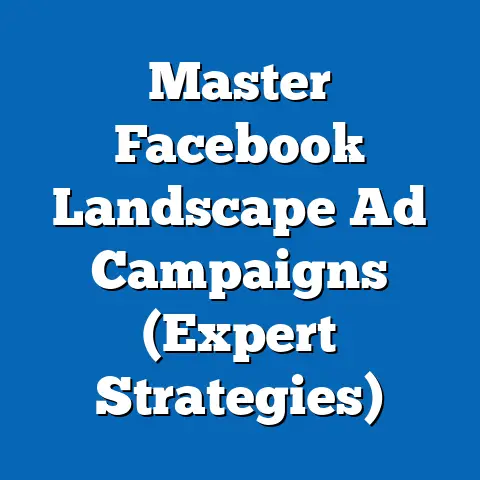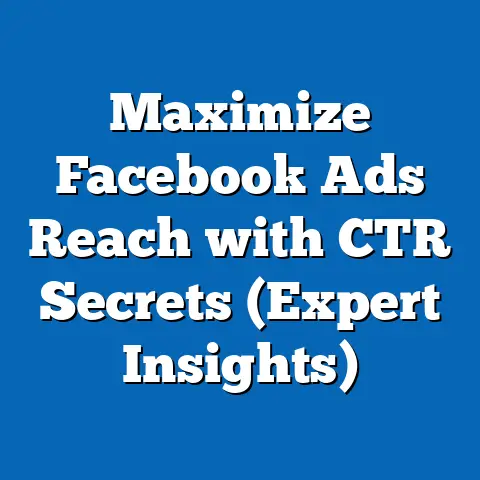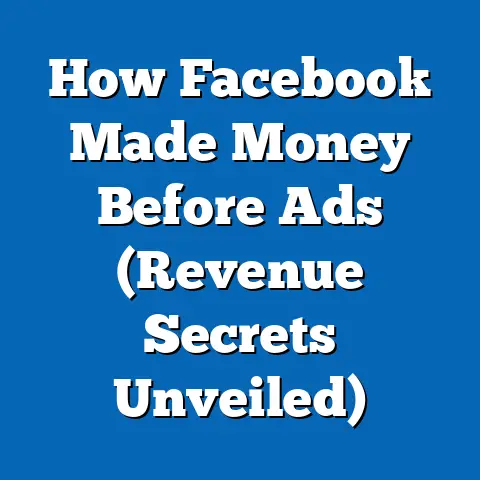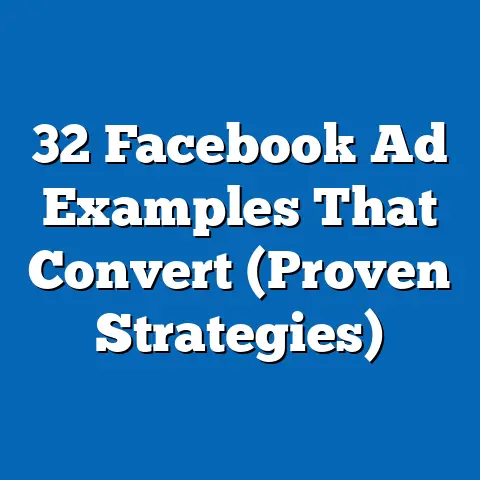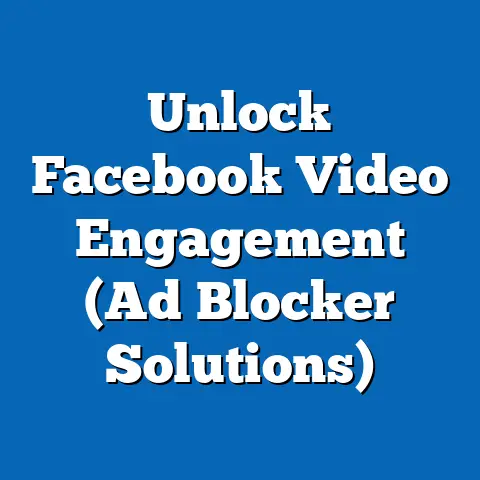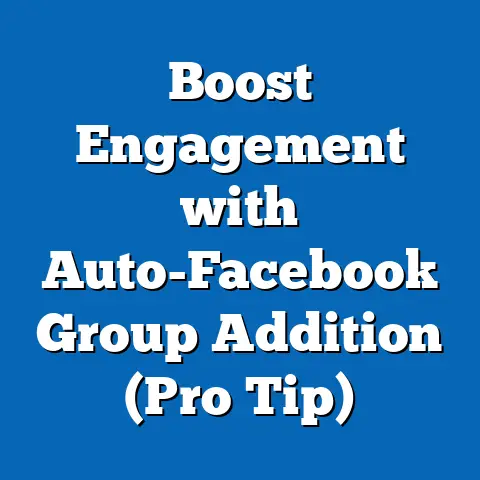Understanding Paid Facebook Ads Costs (Insider Pricing Secrets)
Have you ever felt like you’re throwing money into a black hole when running Facebook Ads? I know I have. There’s this initial excitement of reaching millions, followed by a wave of confusion and a nagging feeling that you’re not getting the best bang for your buck. I remember my first campaign – I was so eager to see results that I just set a budget and hoped for the best. The results were… underwhelming, to say the least. The costs seemed to fluctuate wildly, and I couldn’t quite grasp what was driving them.
This frustration is incredibly common. Many entrepreneurs and marketers struggle to navigate the often-opaque pricing structures of Facebook advertising. You’re not alone if you’ve felt confused, anxious, or even a little ripped off. In fact, a recent survey showed that nearly 60% of small businesses find Facebook Ads pricing difficult to understand.
But here’s the good news: understanding the costs associated with Facebook Ads isn’t rocket science. It’s about demystifying the platform, learning the lingo, and uncovering the insider secrets that can empower you to make informed decisions. This knowledge can transform your campaigns from expensive experiments into powerful, cost-effective marketing tools. So, let’s dive in and unlock the secrets to Facebook Ads pricing!
The Basics of Facebook Ads Costs
Before we delve into the intricacies, let’s get a handle on the fundamental metrics that define Facebook Ads costs. These are the building blocks of your advertising budget, and understanding them is crucial for effective campaign management.
- CPC (Cost Per Click): This is the amount you pay each time someone clicks on your ad. It’s a direct measure of how much it costs to drive traffic to your website or landing page.
- CPM (Cost Per 1,000 Impressions): This is the amount you pay for every 1,000 times your ad is displayed, regardless of whether anyone clicks on it. CPM is useful for brand awareness campaigns where the goal is to reach a large audience.
- CPA (Cost Per Acquisition): This is the amount you pay for each conversion, such as a purchase, lead generation, or app install. CPA is the most direct way to measure the cost of achieving your specific marketing goals.
These metrics are not created equal, and their importance varies depending on your campaign objectives. For example, if you’re running a campaign to drive website traffic, CPC is a critical metric to monitor. If you’re focused on brand awareness, CPM takes center stage. And if you’re aiming for direct sales, CPA is the ultimate performance indicator.
Behind the scenes, Facebook uses a bidding system to determine which ads get shown to users. Think of it as an auction, where advertisers compete for ad placements based on their bids. The higher your bid, the more likely your ad is to be displayed. But it’s not just about the money; Facebook also considers the quality and relevance of your ad, as we’ll see later.
Factors Influencing Facebook Ads Costs
Now that we’ve covered the basics, let’s explore the various factors that can significantly impact the cost of your Facebook Ads. Understanding these factors is like having a secret map that guides you through the complexities of the platform and helps you optimize your campaigns for maximum impact.
- Target Audience: The demographics and interests of your target audience play a significant role in determining your ad costs. Reaching a highly specific and niche audience can be more expensive than targeting a broader group. This is because competition for that niche audience is often higher. For example, targeting “CEOs of tech companies in Silicon Valley” will likely be more expensive than targeting “small business owners in the United States.”
- Ad Quality and Relevance: Facebook rewards advertisers who create high-quality, relevant ads that resonate with their target audience. This is reflected in the ad relevance score, which ranges from 1 to 10. A higher score indicates that your ad is more relevant to the audience, leading to lower costs and better ad placement. Creating compelling visuals, writing engaging copy, and ensuring your ad aligns with the interests of your target audience are key to improving your ad relevance score.
- Competition: The level of competition in your industry and the time of year can significantly impact ad costs. During peak seasons like the holidays, when many businesses are vying for attention, ad costs tend to rise due to increased demand. Similarly, if you’re in a highly competitive industry, you can expect to pay more to stand out from the crowd. Researching industry trends and adjusting your bidding strategy accordingly can help you navigate these competitive landscapes.
- Ad Placement: Where your ad is displayed on Facebook can also affect its cost. Different placements, such as the News Feed, Stories, Audience Network, and Messenger, come with different pricing structures. The News Feed is typically the most expensive placement, as it’s the most visible and engaging. Stories are generally more affordable, while the Audience Network can offer lower costs but may also come with lower engagement rates. Experimenting with different placements and analyzing their performance can help you optimize your ad spend.
To illustrate these points, consider a real-world example. Imagine you’re a local bakery running a Facebook Ad campaign to promote your new line of sourdough bread. If you target a broad audience of “people who like bread,” your costs might be relatively low, but your conversion rate might also be low. However, if you narrow your target audience to “people who like artisanal bread and live within 5 miles of your bakery,” your costs might increase, but your conversion rate is likely to be much higher. This is because you’re reaching a more qualified audience who are more likely to be interested in your product.
Understanding the Facebook Ads Auction System
The Facebook Ads auction system is the engine that drives the platform, determining which ads get shown to users and at what cost. Understanding how this system works is like having a backstage pass to the inner workings of Facebook advertising, allowing you to optimize your bids and improve your ad performance.
The auction system takes into account several factors when determining ad placement:
- Bid Amount: This is the maximum amount you’re willing to pay for a click, impression, or conversion. The higher your bid, the more likely your ad is to be displayed.
- Ad Quality: As mentioned earlier, Facebook rewards high-quality, relevant ads. This is measured by the ad relevance score and other factors, such as the click-through rate (CTR) and engagement rate.
- Estimated Action Rates: Facebook also considers the likelihood that your ad will result in the desired action, such as a purchase or lead generation. This is based on historical data and machine learning algorithms.
The winning ad is not always the one with the highest bid. Facebook prioritizes ads that provide a positive user experience, meaning ads that are relevant, engaging, and likely to result in the desired action. This is why it’s crucial to focus on creating high-quality ads that resonate with your target audience.
To leverage the auction system effectively, consider these strategies:
- Use Automated Bidding: Facebook offers various automated bidding options, such as lowest cost and target cost, which can help you optimize your bids based on your campaign objectives.
- Experiment with Manual Bidding: If you’re comfortable with more hands-on control, you can use manual bidding to set your own bid amounts. This allows you to fine-tune your bidding strategy based on your performance data.
- Monitor Your Performance: Regularly monitor your ad performance and adjust your bids accordingly. If your ads are performing well, you can consider increasing your bids to reach a wider audience. If your ads are underperforming, you may need to lower your bids or improve your ad quality.
I remember one campaign where I was struggling to get my ads shown. I was using a relatively low bid amount, and my ad relevance score was mediocre. After some experimentation, I realized that my ad copy wasn’t resonating with my target audience. I rewrote the copy, focusing on the benefits of my product and using more engaging language. As a result, my ad relevance score improved, and my ads started getting shown more frequently, even though I didn’t significantly increase my bid amount.
Hidden Costs of Facebook Advertising
While CPC, CPM, and CPA are the most visible costs associated with Facebook Advertising, there are often hidden costs that can significantly impact your overall ad spend. These costs are often overlooked by beginners, but they’re crucial to consider when budgeting for your campaigns.
- Creative Production Costs: Creating high-quality ad creatives, such as images and videos, can be a significant investment. You may need to hire a designer or videographer to create visually appealing ads that capture the attention of your target audience. Additionally, A/B testing different ad creatives can help you identify the most effective visuals, but it also adds to the overall cost.
- Management and Optimization Expenses: Running successful Facebook Ad campaigns requires ongoing monitoring, analysis, and optimization. If you don’t have the time or expertise to manage your campaigns effectively, you may need to hire an agency or freelancer. These services can come with significant costs, but they can also deliver significant returns by improving your ad performance and reducing your overall ad spend.
- Retargeting and Custom Audiences: Retargeting and custom audiences are powerful tools for reaching people who have previously interacted with your business. However, these targeting strategies can also increase your overall ad spend. Retargeting requires you to track website visitors or app users, which can involve additional costs. Custom audiences, such as email lists or phone numbers, may require you to purchase or rent data, which can also add to the cost.
To illustrate these hidden costs, consider a case study. A small e-commerce business decided to run a Facebook Ad campaign to promote their new line of organic skincare products. They initially budgeted for CPC and CPM, but they didn’t account for the cost of hiring a designer to create high-quality product images. As a result, their ads looked amateurish and didn’t capture the attention of their target audience. They eventually realized that they needed to invest in professional-quality visuals, which added to their overall ad spend.
Conclusion: The Path to Cost-Effective Facebook Ads
Understanding Facebook Ads costs is essential for running effective and budget-friendly campaigns. While the pricing may seem daunting at first, a solid grasp of the factors at play can empower you to make informed decisions and optimize your ad spend.
Remember these key takeaways:
- Master the Basics: Understand CPC, CPM, and CPA and how they relate to your campaign objectives.
- Know Your Audience: Target your audience effectively to improve ad relevance and reduce costs.
- Optimize Your Ads: Create high-quality, engaging ads that resonate with your target audience.
- Leverage the Auction System: Use automated or manual bidding to optimize your bids and improve ad performance.
- Account for Hidden Costs: Factor in creative production costs, management expenses, and retargeting strategies when budgeting for your campaigns.
Now it’s your turn. Take the insights you’ve gained from this article and apply them to your future Facebook Ad campaigns. Experiment with different targeting options, ad creatives, and bidding strategies to find what works best for your business. With a little effort and a lot of data analysis, you can unlock the secrets to cost-effective Facebook advertising and achieve your marketing goals. Good luck!

